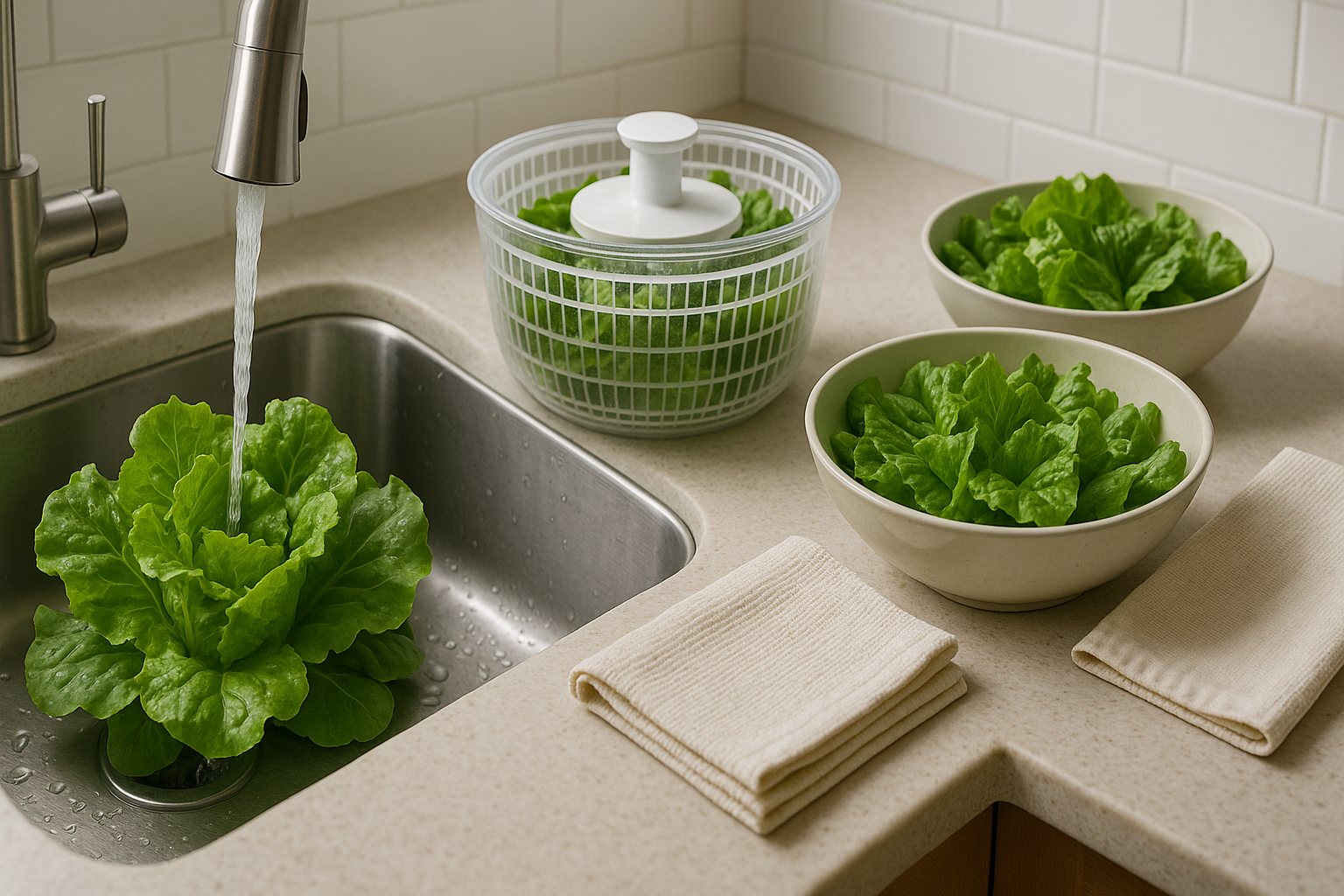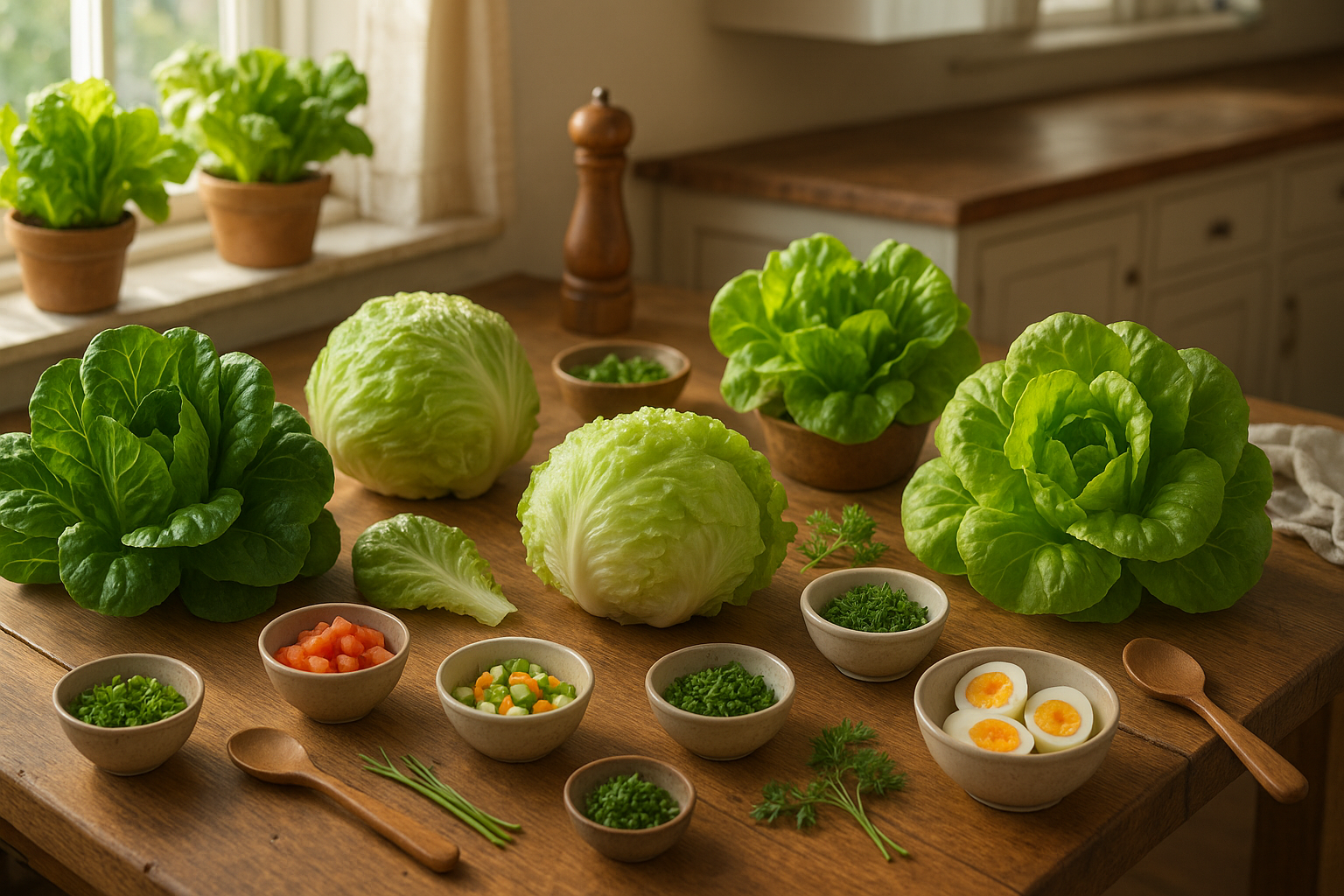Introduction
If you’re searching for creative lettuce recipes, there’s nothing quite as satisfying as making meals with fresh homegrown lettuce. Not only does this leafy green add crispness and color to every bite, but its subtle flavor shines in more than just your basic salad bowl. Homegrown lettuce brings a fresh crunch to wraps, soups, and even grilled dishes, offering a world of possibilities for quick, healthy eating.
Imagine tossing together lettuce tacos on a busy weeknight, blending it into a tangy green smoothie, or layering it in a homemade Vietnamese spring roll. No matter your cooking skill, there’s a way to elevate meals with this garden staple.
In this post, you’ll discover 10 easy recipes with fresh homegrown lettuce—ranging from fun appetizers to satisfying mains—that are sure to shake up your menu and help you make the most of every tender leaf you pick.
Why Use Fresh Homegrown Lettuce?

Growing your own lettuce offers a bunch of benefits that go well beyond just convenience. Fresh-cut lettuce from your backyard or kitchen windowsill tastes unmatched in crispness and flavor—its leaves are full of life, never limp or wilted like some grocery store varieties.
Since you harvest just before eating, homegrown lettuce retains more nutrients, like vitamin A, vitamin K, and antioxidants, which often break down during transportation and storage.
Besides better taste and nutrition, growing lettuce at home is a sustainable choice: it cuts down on plastic packaging, reduces food miles, and lowers your carbon footprint. You’ll also save money because a single packet of seeds can yield weeks of fresh greens at a fraction of store prices.
Plus, you get complete control over what goes on your lettuce, avoiding pesticides and chemicals commonly used in commercial farming.
For the freshest flavor, try picking your lettuce leaves early in the morning when their moisture content is highest. Simply snip the outer leaves and let the plant keep growing, so you get a continuous harvest and a steady supply of delicious, healthy greens.
Preparing Lettuce for Cooking

When it comes to preparing lettuce for cooking, taking a few extra steps ensures your greens stay crisp, fresh, and appetizing. Start by separating the leaves and rinsing them thoroughly under cold running water to remove dirt and debris—swish them around in a large bowl if they’re extra sandy.
Using a salad spinner is a game-changer for drying; spin several times to remove all excess water, since even a little moisture can make your lettuce soggy. If you don’t have a spinner, gently pat the leaves dry between clean kitchen towels or paper towels.
For storage, keep your washed and dried leaves loosely wrapped in paper towels inside a breathable container or a partially open sealable bag in the fridge’s crisper drawer—this keeps moisture at bay and preserves that satisfying crunch. Avoid crowding, as airflow is crucial for freshness.
Choosing the Right Lettuce for Your Dish
Iceberg and romaine lettuces are ideal for dishes that need extra crunch, like classic Caesar salads or lettuce wraps, while butter and Bibb lettuces offer tender, softer textures that shine in delicate salads or when used as pretty wraps for appetizers. Mixing crunchy and tender types adds interest and texture to any salad.
Remember, preparing lettuce properly makes all the difference between a limp salad and one that truly pops!
10 Easy Recipes with Fresh Homegrown Lettuce

Freshly picked homegrown lettuce is far more versatile than many imagine, lending crispness and subtle flavor to a wide range of quick meals.
- For a light but satisfying lunch, try Lettuce Wraps—simply fill big, sturdy leaves with seasoned ground chicken, shredded carrots, and a dash of hoisin sauce.
- For a breakfast twist, a Lettuce Frittata works wonders: gently wilt chopped lettuce in a skillet with eggs, feta, and herbs, then bake until set.
- Lettuce Tacos make an easy dinner idea by swapping out tortillas for lettuce leaves and filling them with seasoned beef, salsa, and avocado.
- Lettuce Soup is a warming choice; simmer lettuce with potato, onion, and broth, then puree and finish with a swirl of cream.
- For protein-rich snacks, Lettuce Cups with boiled shrimp, diced mango, and a lemony yogurt drizzle are quick and refreshing.
- To elevate sandwiches, layer crunchy leaves onto a turkey and cheese sandwich with tomato and mayo for extra freshness.
- For a fast and healthy dinner side, Lettuce Stir Fry cooks ribbons of lettuce with garlic, soy sauce, and sesame seeds in just moments.
- Grilled Lettuce is surprisingly good—halved heads of romaine brushed with olive oil and a squeeze of lemon make a smoky, caramelized side dish.
- Lettuce Smoothie sneaks greens in by blending chopped lettuce with pineapple, banana, and yogurt for a nutrient-packed snack.
- Lastly, whip up a Lettuce and Herb Sandwich Spread by pureeing lettuce with cream cheese, chives, and parsley, perfect for spreading on crackers or sandwiches.
These ten easy recipes showcase how homegrown lettuce can transform ordinary meals with minimal effort and maximum flavor.
Tips for Making Lettuce-Based Meals More Exciting
Lettuce-based meals can be anything but boring with a few simple upgrades. Start by boosting nutrition and flavor with proteins like grilled chicken, hard-boiled eggs, chickpeas, or flaky tuna—these not only add substance but also keep you full longer. Toss in plenty of fresh herbs such as basil, mint, or cilantro for a burst of freshness in every bite.
For an even bigger impact, skip store-bought dressings and whip up your own by mixing olive oil, lemon juice, garlic, and a pinch of mustard; you’ll get way more flavor with a lot less sugar.
When it comes to serving, think beyond the ordinary salad bowl. Try layering your ingredients into mason jars for a portable lunch or use big lettuce leaves as wraps for a crunchy, low-carb alternative to tortillas. You can also create vibrant lettuce bowls, piling on grains, proteins, and veggies for a meal that looks as good as it tastes.
Don’t forget to mix in other garden veggies—radishes, snap peas, and cherry tomatoes all add pops of color and seasonal flavor. Swapping ingredients with what’s fresh and in season will keep your meals interesting and your taste buds happy.
Storing Leftovers and Reducing Waste
To keep lettuce-based dishes fresh when prepared in advance, store them in airtight containers and place a dry paper towel on top before sealing—this helps absorb moisture and keeps the leaves crisp. If you’ve made a salad, keep dressings and moist toppings separate, adding them just before serving to avoid sogginess.
For leftover scraps like wilted outer leaves or lettuce cores, consider composting to enrich your garden soil or blending small bits into green smoothies for an easy nutrient boost. While it might be tempting to freeze lettuce to extend its life, freezing causes lettuce cells to burst, resulting in mushy, waterlogged leaves that aren’t appetizing in salads.
Instead, aim to use fresh lettuce within a week; most varieties—like romaine and iceberg—stay crisp in the fridge for 5 to 7 days when stored properly. Planning your meals and using up trimmings creatively is a simple way to reduce food waste and get more value from every head of lettuce.
Conclusion & Call to Action

Don’t let your fresh-picked lettuce sit idle—get creative in the kitchen and discover just how versatile it can be! From crisp salads and homemade wraps to vibrant smoothie add-ins, homegrown lettuce truly shines in countless recipes.
Gardening not only brings fresh flavors but also inspires you to try new things and enjoy the satisfaction of growing your own food. Why not have some fun experimenting this week?
Share your favorite lettuce creations with us in the comments or tag your photos on social media—we’d love to see and celebrate your delicious ideas!
